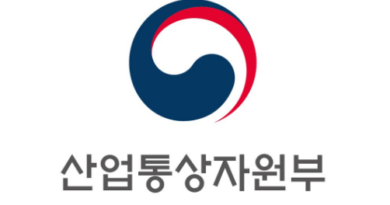(K-Beauty) Future Cosmetics Industry Promotion Plan
Hello, I am Minister of Health and Welfare Park Neung-hoo.
I will announce how to nurture K-beauty future cosmetics industry.
First, let me tell you the background of the plan.
K-Beauty leads the global trend based on innovative product development and the spread of hallyu, and we have grown to be the fourth largest cosmetics exporter.
However, exports to the Chinese region are concentrated, so it is urgent to find new markets, and there are limitations to the continued growth due to the lack of business structures and original technologies centered on large companies.
In order to maintain the growth momentum and make a leap forward as a ‘makeup G3’ country, we prepared pan-government measures based on collecting opinions from industrial sites.
Let me tell you about the main contents of the measures.
With the vision of becoming one of the world’s top three cosmetics exporting countries, we aim to foster the cosmetics industry as the world’s third largest exporting country, nurture global leading companies and small companies, and create 73,000 new jobs by 2022.
To achieve this goal, we have prepared measures to support the entire cycle of the cosmetics industry: first, second, regulatory innovation, third, brand enhancement, fourth, industrial infrastructure establishment.
First of all, we will expand R&D of basic materials and new technologies for cosmetics, which had high priority on the site. Through this, we will increase our technology level and reduce our dependence on raw material import.
Next, we will support the development of cosmetics that match the skin characteristics of individuals by utilizing genetic analysis results linked to bio big data.
In addition, we will support development of such technologies as 3D artificial skin that can enhance the effectiveness of cosmetics or replace animal testing.
Second, let me talk about the regulatory innovation challenge.
In order for cosmetics to enter foreign markets smoothly, our regulatory system will also be improved in line with international standards.
First of all, we will protect core technologies and help small and medium-sized brands grow by removing manufacturer’s labeling obligations, which were highly demanded by businesses on the site.
Next, we will establish a customized cosmetics system to open the way for providing cosmetics customized to customers based on individual diagnosis results.
In addition, we will actively respond to the infringement of intellectual property rights caused by the copycat sales of Korean cosmetics with related ministries such as the Korean Intellectual Property Office and the Ministry of Foreign Affairs.
Third, I will talk about the challenge of brand enhancement.
In order to strengthen our advance into emerging and promising countries, we will strengthen the promotion and sales of existing cosmetics products.
We will establish a public relations center for Korean visitors in Myeong-dong and Gangnam in Korea, and create synergy through makeup and linkage.
In addition, we will hold a large-scale Korean cosmetics fair at the national level to establish it as a brand cultural product.
And finally, I’m going to talk about the challenges of building an industrial infrastructure.
To continue to strengthen the competitiveness of K-beauty, we will operate a private-private consultative body to designate an industrial complex with excellent environment as a special makeup cluster so that infrastructure such as production facilities, research institutes, and manpower training institutions can create synergy effects.
In addition, a comprehensive support center for cosmetics will be established to provide comprehensive support for research and development and general consulting.
In addition, we will strive to nurture K-beauty global workforce by running a government-level cosmetics industry academy.
Through these plans, we will upgrade the Korean cosmetics industry to a level with systematic government support so that it can become a major export industry for Korea’s new growth.
Thank you very much
[Question/answer]
※For information that is not confirmed as not using the microphone, please understand, as it is marked with an asterisk (***).
QUESTION: You’ve come up with a variety of options, and I’ve read a little bit about it: big companies are globally competitive, and small businesses are still a little less competitive. So this time, I was wondering if you should have dualized support measures between big businesses and small businesses, and if you did, how much R&D support did you secure for small businesses?
답Reply> I think you have made a good point. Now there are about 12,000 cosmetics manufacturers and vendors. There are big brands, big companies, big companies, but most of them are small and medium- So we agree that support should be divided into support for large companies and support for small businesses.
In the case of small businesses, R&D should be more actively supported by us, but the director in charge will tell us about the specific amount of R&D. We’ve been actively supporting and strengthening the infrastructure itself so that we don’t need additional installation of safety testing laboratories or other facilities that are difficult for small and medium-sized enterprises to have by doing things like safety tests that require basic cosmetics.
I’ll hear from the Director about the R&D amount.
Reply: Im In-taek, director of the Health and Industry Policy Bureau at the Ministry of Health and Welfare. Cosmetics R&D has been applied until 2018, but not this year. Next year’s budget reflects 7.7 billion won. The initial budget is 7.7 billion won. From 2020, we’re going to make a big financial investment in cosmetics, a preliminary feasibility study, before we put in our budget. We are preparing preliminary feasibility studies so that we can provide about 20 to 30 billion won in annual
You said you would remove manufacturer’s labeling obligations as a regulatory innovation measure. I understand that the manufacturer of medicines and processed foods is registered now. I know this was done to boost the SME brand, but I think there is a problem with consumer distrust that causes consumers to apply products that they don’t know which manufacturers they make. How do you think you can solve this?
The second question is that you are making a lot of localization with regard to materials. As far as Japan is concerned, we know that there are about 30 percent of the cases in Korea. I wonder how hard you are trying to localize such materials amid deteriorating relations between Korea and Japan.
Answer: I’ll give you an answer, and more specifically, our director will do it again, but wouldn’t removing the manufacturer’s label bring complaints or distrust to consumers? We are aware of the concerns. However, the manufacturer is not responsible for the various side effects of cosmetic sales and is still with the vendor. So the primary responsibility for consumers when they have a side effect or trouble, for example, is with the vendor, so clearly marking the seller is enough. However, I have a history of deleting labels from production and manufacturing, so I’ll explain them in more detail in a separate time.
However, if you answer the question, the consumer’s anxiety will not be great. Because the seller, not the producer or manufacturer, is still responsible for this.
Secondly, we are very focused on the localization of materials. About 28 percent of the materials we’re using now are Japanese products, and we’re going to figure out a specific number, up to 16 percent, up to 18 percent, in the next three years. We are spending a lot of R&D money on materials with a plan to reduce the amount from 23 to 18 percent by 2022.
<Answer ( (Kang Seok-yeon, Food and Drug Ministry Bio)Director of Biomedical Medicine) Food and Drug Administration BioThis is the director of biomedical medicine. I’ll add to the description of the deletion of the manufacturer’s name In short, what the Minister said. First, right now, cosmetics are supposed to show both responsible sellers and manufacturers. In fact, the person who is responsible for any problems with the product is held accountable by the responsible seller, as the word states. The current cosmetics display contains all safety related information. And consumers might still want to know who the manufacturer is. But we don’t force it to be used. So if you want to use the responsible vendor only, you can use the responsible vendor only, and if you say, ‘I’m going to use the manufacturer as well,’ you can use the manufacturer as well. Consumers can choose. Since safety information is still provided in full, consumers don’t think it will have such an effect as blocking large information.
Also, we will try to persuade and resolve such issues through good communication, whether it’s with consumers or related associations.
You said you’re going to punish fake <question문 products now. Please explain in detail how you have been and how you will be doing in the future.
Answer: There’s a lot of fake products going on in China right now, and the removal of the manufacturer’s labels that I just mentioned is part of that policy. It’s a part of it, and it’s basically an infringement of intellectual property rights As for intellectual property rights, we are actively responding to the violation of intellectual property rights by forming a T/F, which is combined with the private sector, and the Korean Intellectual Property Office, the Korea Customs Service, and the Ministry of Foreign Affairs and Trade came in together to find all the fake goods, mainly through diplomatic and foreign diplomatic missions.
And I’m getting ready to play this role a little bit more
<Question> I asked you the first time, but I didn’t get the right answer. I think you were the Director of Health and Industry Policy, but what small and medium-sized businesses need is an answer to how much you’ve increased your R&D scale.
The government’s R&D drive is basically focused on small and medium-sized enterprises rather than big As you know, it is composed of two large companies and small and medium-sized enterprises.
Source: Ministry of Culture, Sports and Tourism. Republic of Korea. http://www.korea.kr








